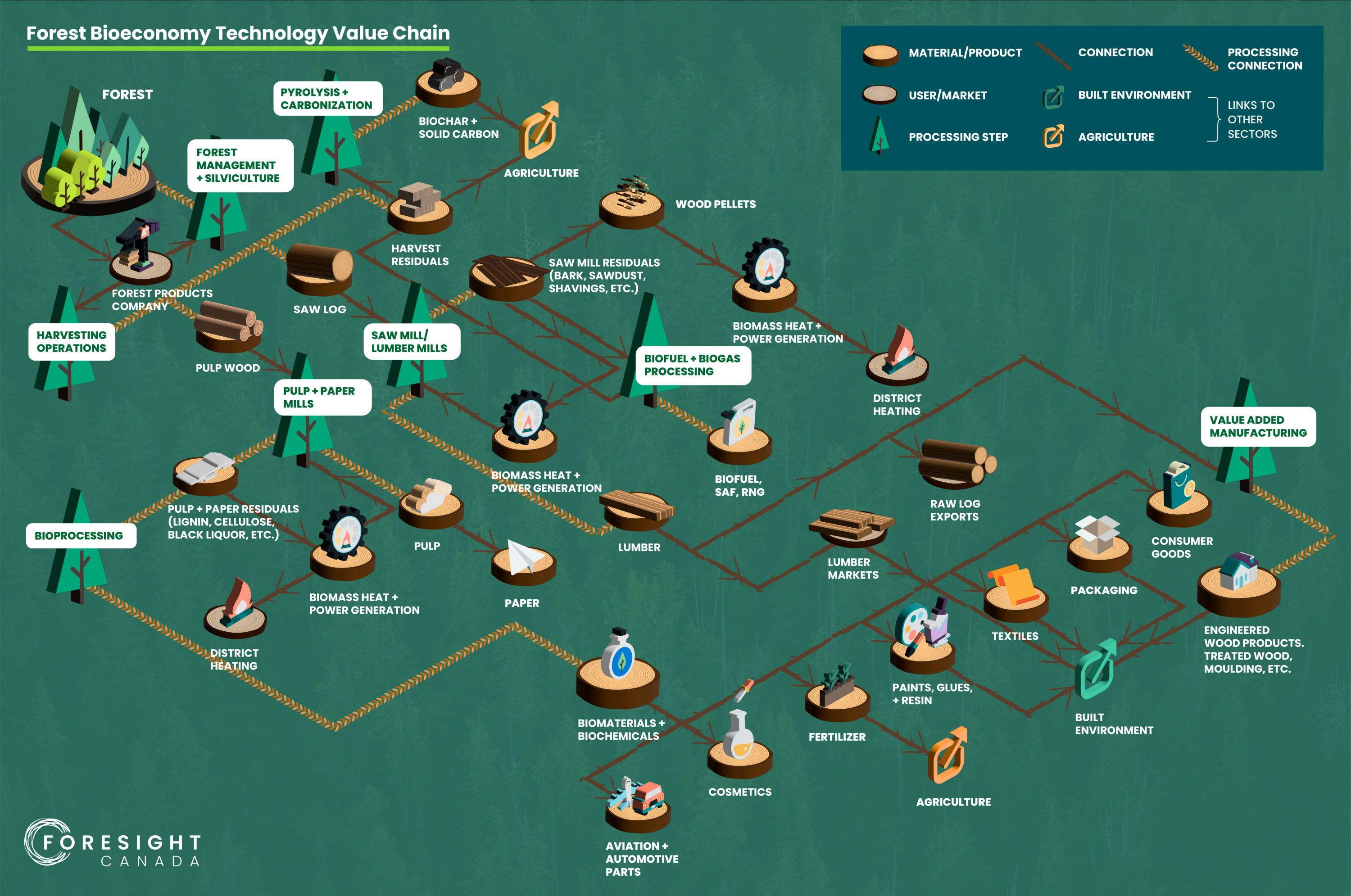Did you know that Canada is the third most forested country in the world, with more than 40 per cent of the nation’s land base covered by forests?
With this in mind, it’s no surprise that Canada is the world’s second-largest forest products exporter.
While the forest sector has historically been a major contributor to Canada’s economy, shifts in demand for traditional forest products like pulp, paper, and lumber have created challenges across the industry. But with these challenges come opportunities for innovation.
Canada’s Budding Innovation Ecosystem
Opportunities across Canada’s forest bioeconomy are proving immensely promising as industry and innovators are developing new sustainable, value-added engineered wood products like mass timber, and are finding ways to utilize forest biomass and residuals to develop biofuels, biochemicals, biomaterials, biochar, renewable fuels, and more.
As these innovative, made-in-Canada forest products continue to gain traction on a global scale, Canada has an opportunity to solidify its position as a world-wide leader in forest product exports.
Canada’s Forest Bioeconomy Value Chain
If Canada is going to capitalize on this opportunity to lead in the development, commercialization, and export of forest products, it is crucial that we understand the strengths, gaps, and opportunities that exist across the Canadian forest bioeconomy sector.
This is why Foresight Canada has embarked on a mission to map, categorize, and analyze our country’s bioeconomy value chain.
We’ve listed 141 Canadian forest bioeconomy companies in the Canada’s Ventures to Value Chains: Forest Bioeconomy database and report.

An invaluable resource for innovators, industry leaders, investors, academics, and government officials, this tool was developed to:
- Help forest bioeconomy ventures understand where they fit along the value chain, highlighting potential competitors as well as collaborators
- Provide information on geographical trends to help inform business decisions for innovators, industry, and investors
- Identify strengths, weaknesses, and opportunities across the value chain
- Highlight areas where R&D and project funding will deliver the greatest value to the cleantech ecosystem as well as Canada’s economy as whole
Key Takeaways from Canada’s Ventures to Value Chains: Forest Bioeconomy Report
Available for purchase, Canada’s Ventures to Value Chains: Forest Bioeconomy uncovers several key themes that will help guide the future of Canadian bioeconomy technology innovation.
- Canada has a strong opportunity to become a global leader in utilizing forest biomass to mitigate GHG emissions of other sectors including agriculture, the built environment, and transportation.
- Bioprocessing is an area of opportunity for Canada to better extract added value from wood harvesting.
- Biofuel and biogas processing is an area of strength for Alberta and British Columbia.
- Engineered wood products companies are concentrated in British Columbia and Québec.
Interested in learning more about Canada’s forest bioeconomy value chain? Check out the Executive Summary.



